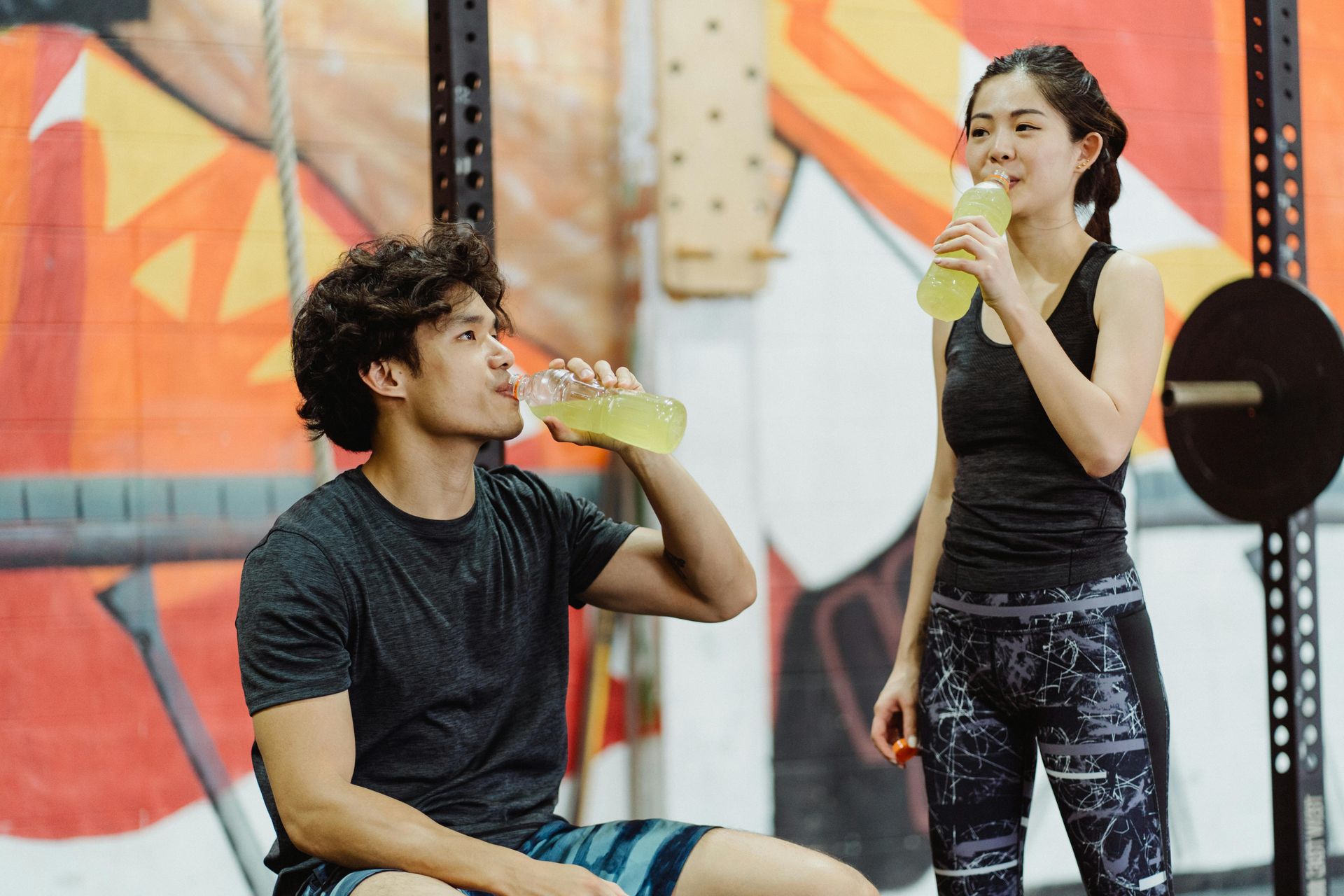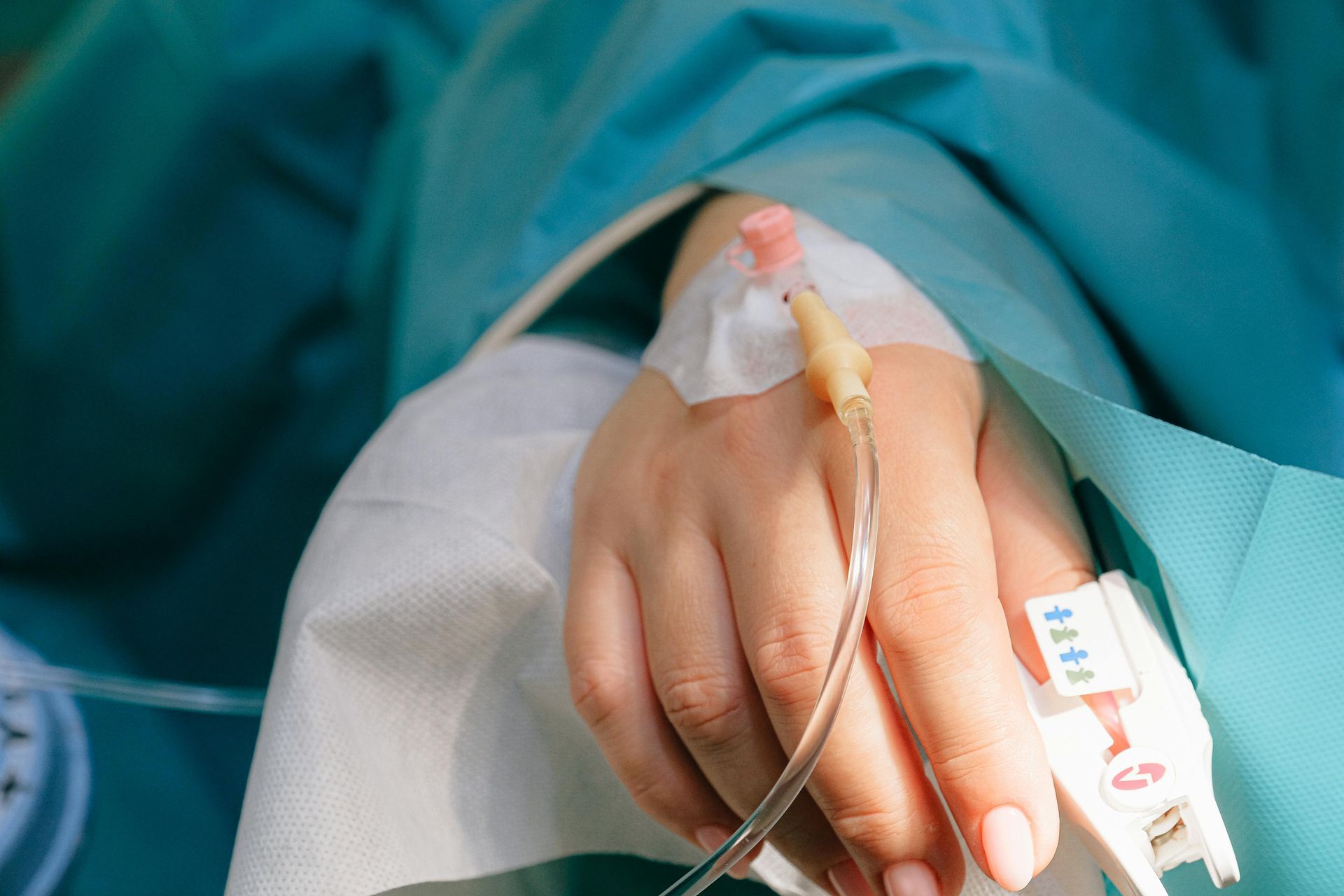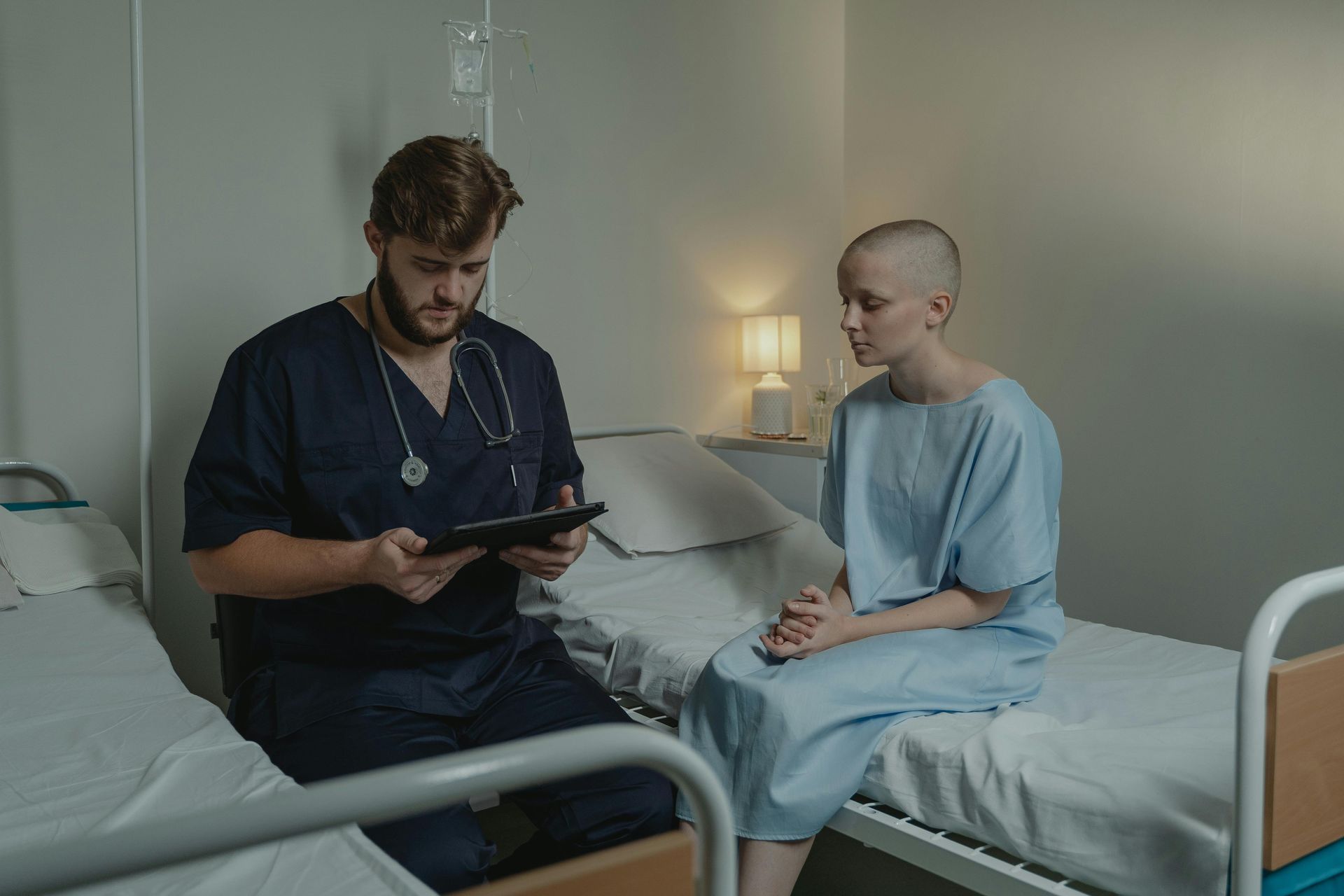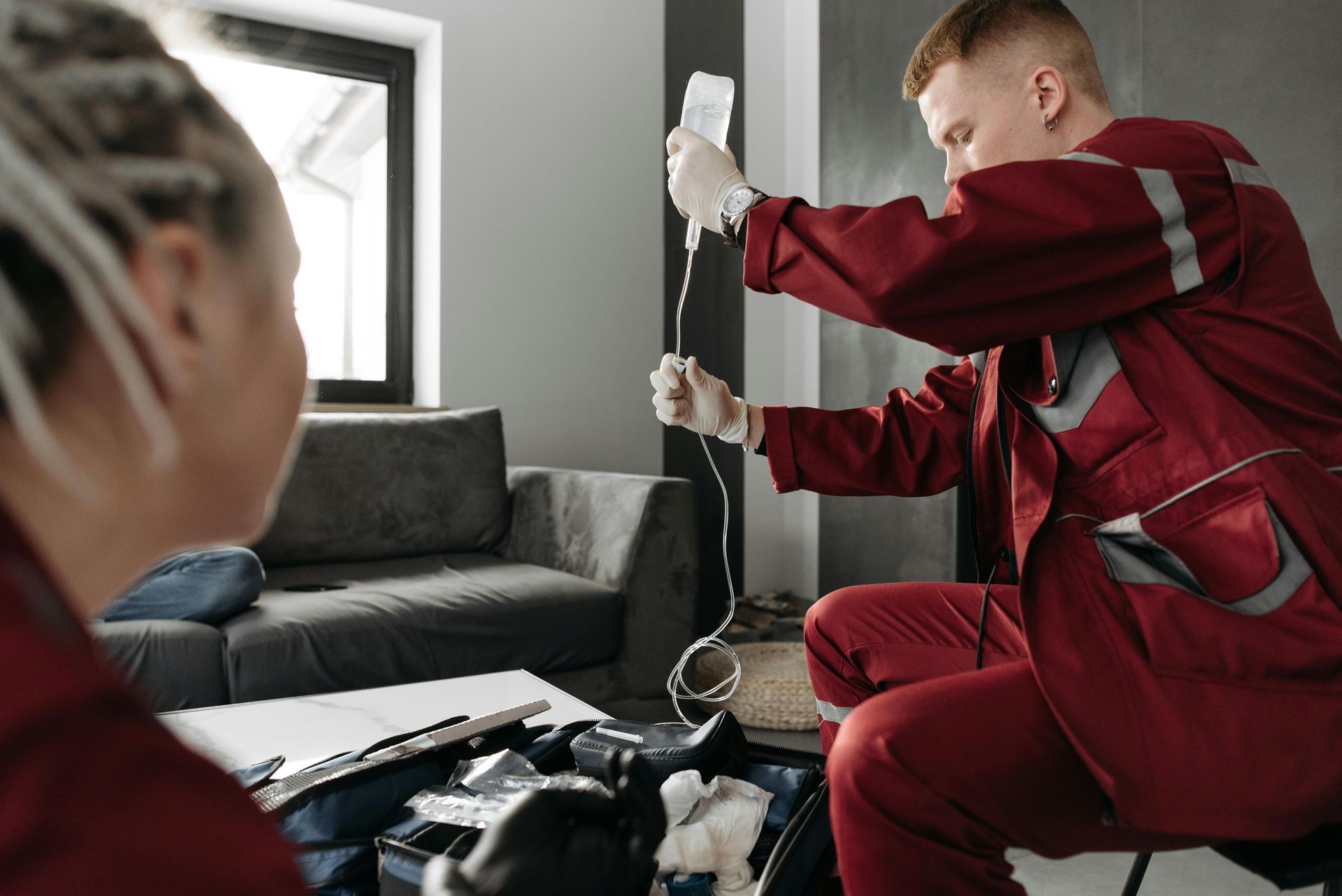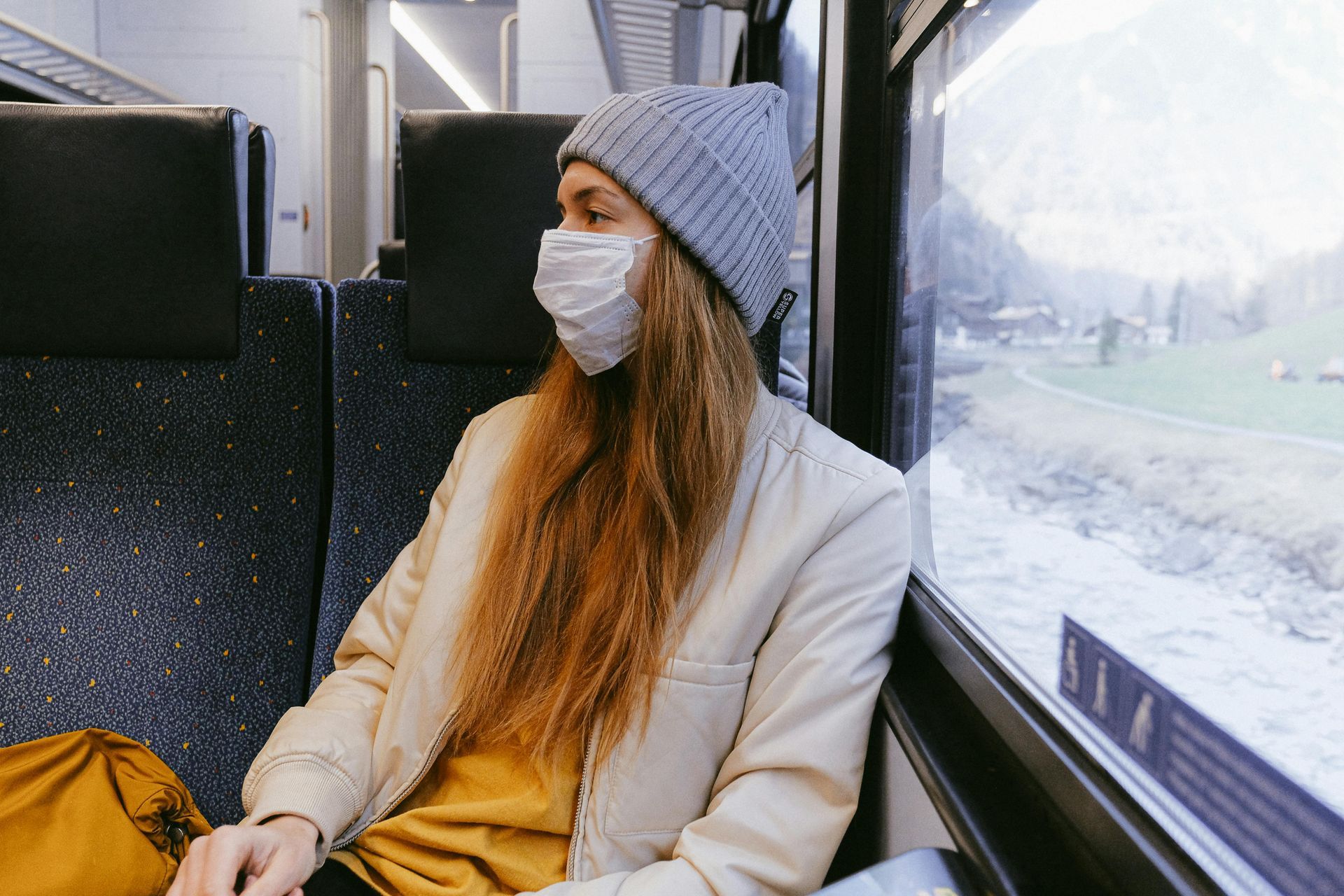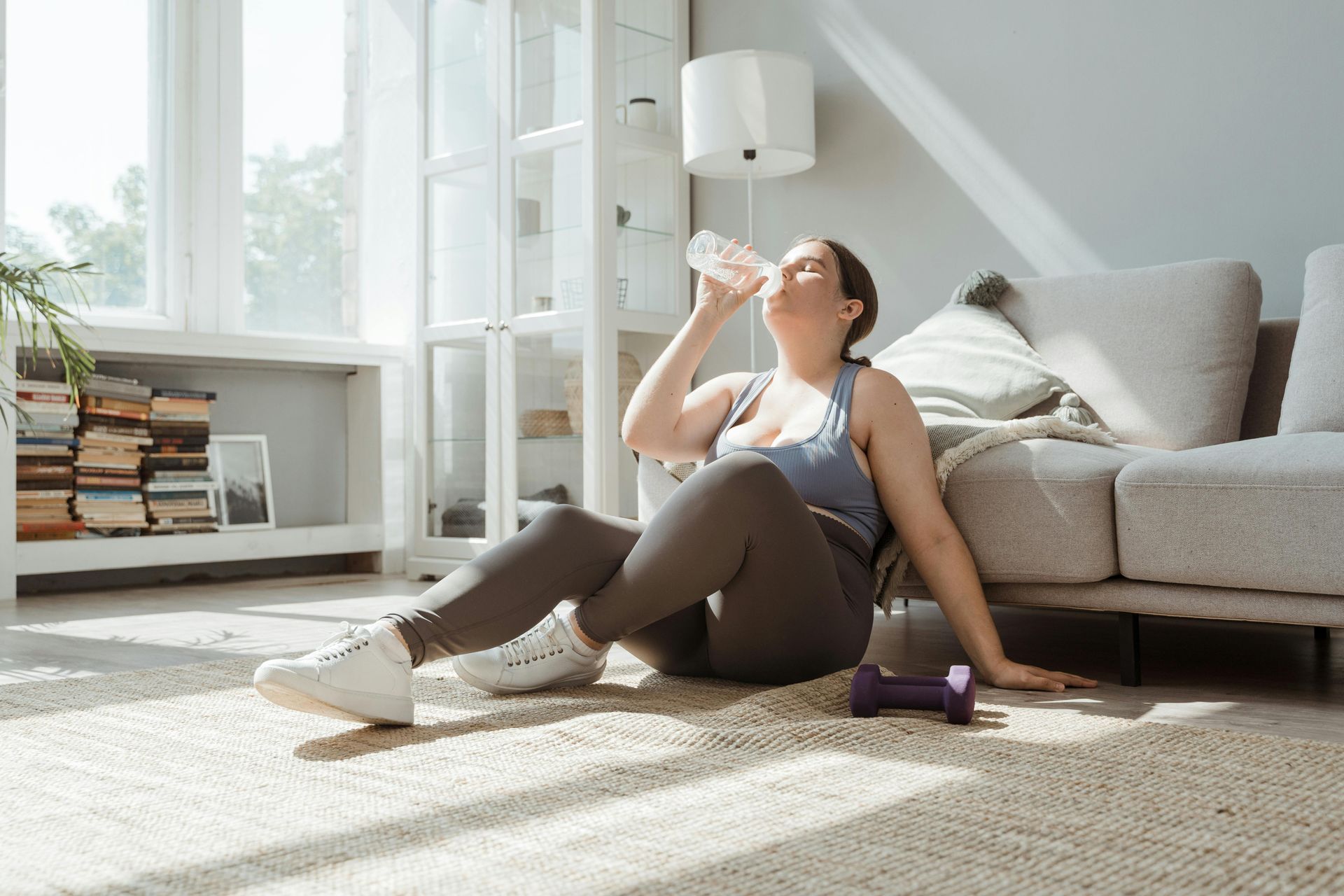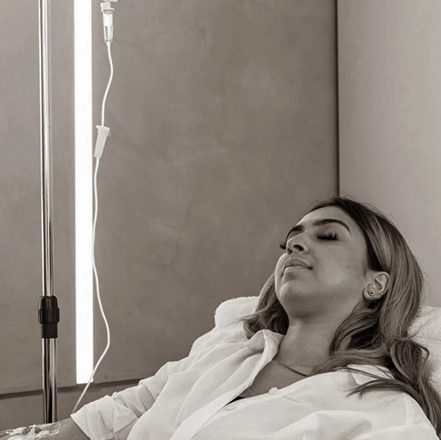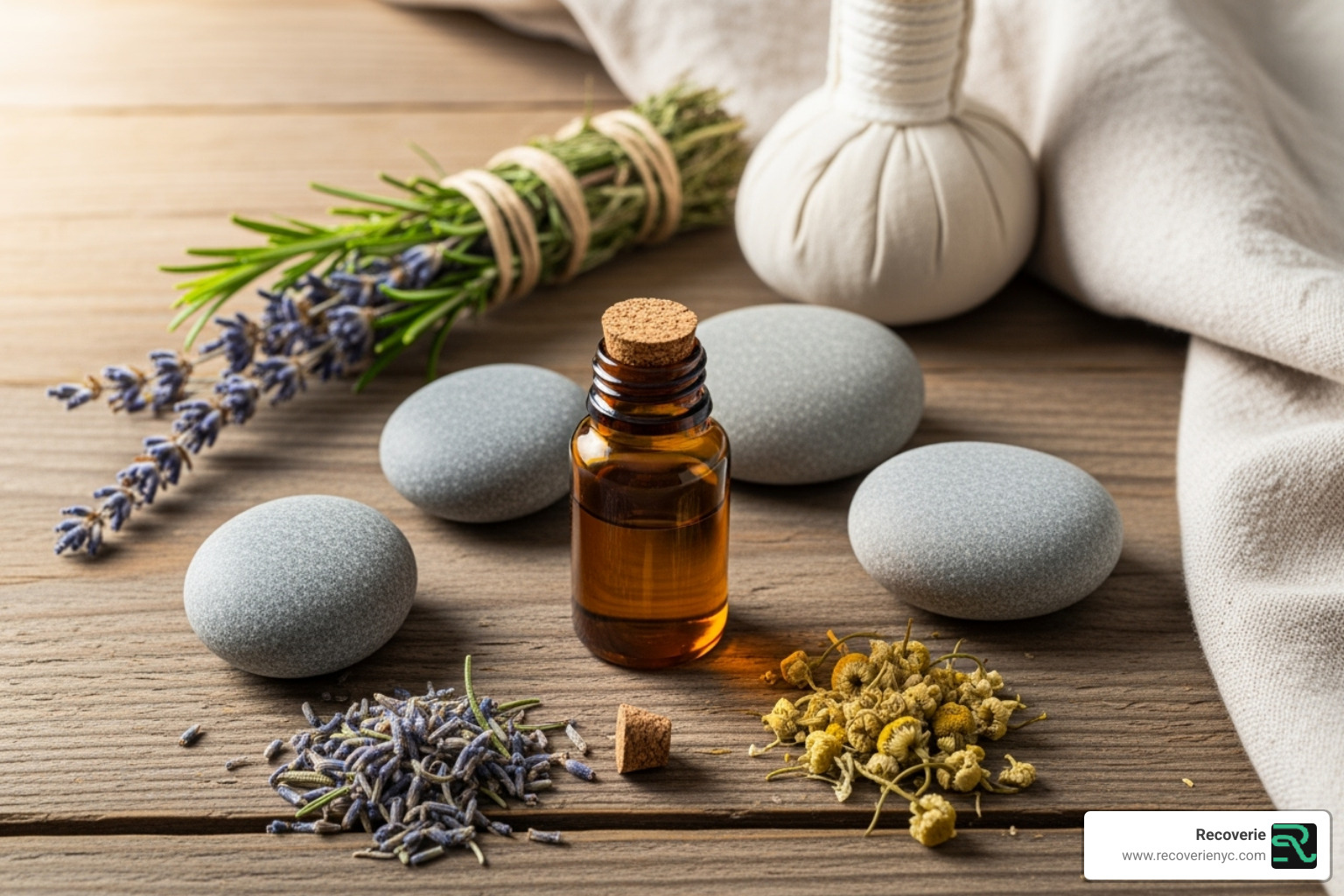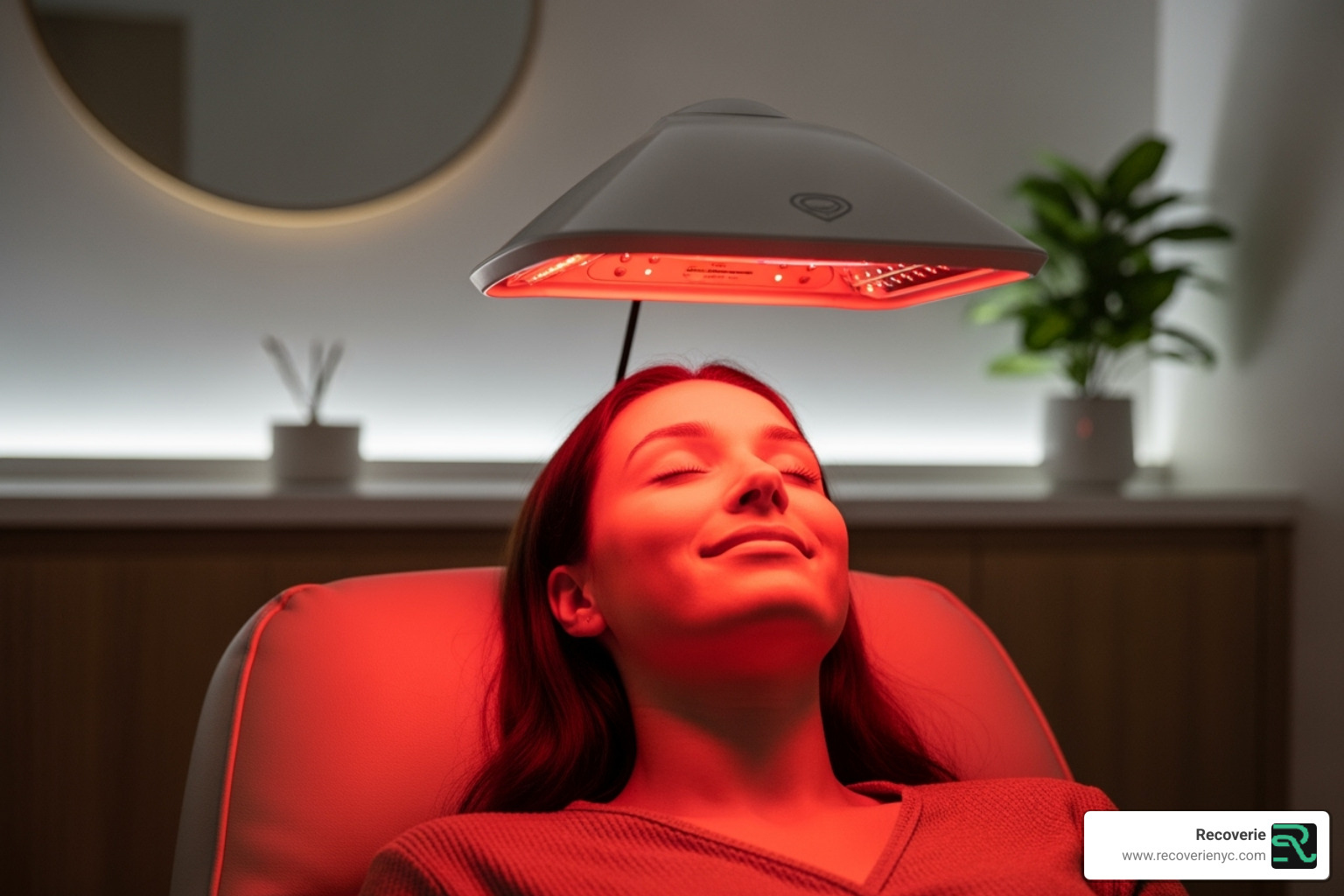Sore No More: How to Soothe Your Muscles
Why Your Muscles Are Trying to Tell You Something

Muscle soreness relief starts with understanding what your body is experiencing. Whether you pushed through an extra set or took the stairs, that familiar ache isn't always a bad thing.
Quick Relief Options:
- Immediate : Light movement, gentle stretching, warm bath
- 24-48 hours : Heat therapy, massage, anti-inflammatory foods
- Prevention : Proper warm-up, gradual progression, adequate sleep
Most muscle soreness—called Delayed Onset Muscle Soreness (DOMS)—is a normal response to new or intense exercise, peaking 24-72 hours post-workout. This discomfort often signals your muscles are adapting and getting stronger, as the microscopic tears causing the soreness are part of a natural rebuilding process.
However, not all muscle pain is created equal. Sharp, stabbing pain or soreness lasting more than five days could indicate a more serious issue.
For urban professionals juggling demanding schedules, understanding the difference between productive soreness and potential injury is key to maintaining a fitness routine. This guide will walk you through proven strategies to ease muscle discomfort and get back to feeling your best.
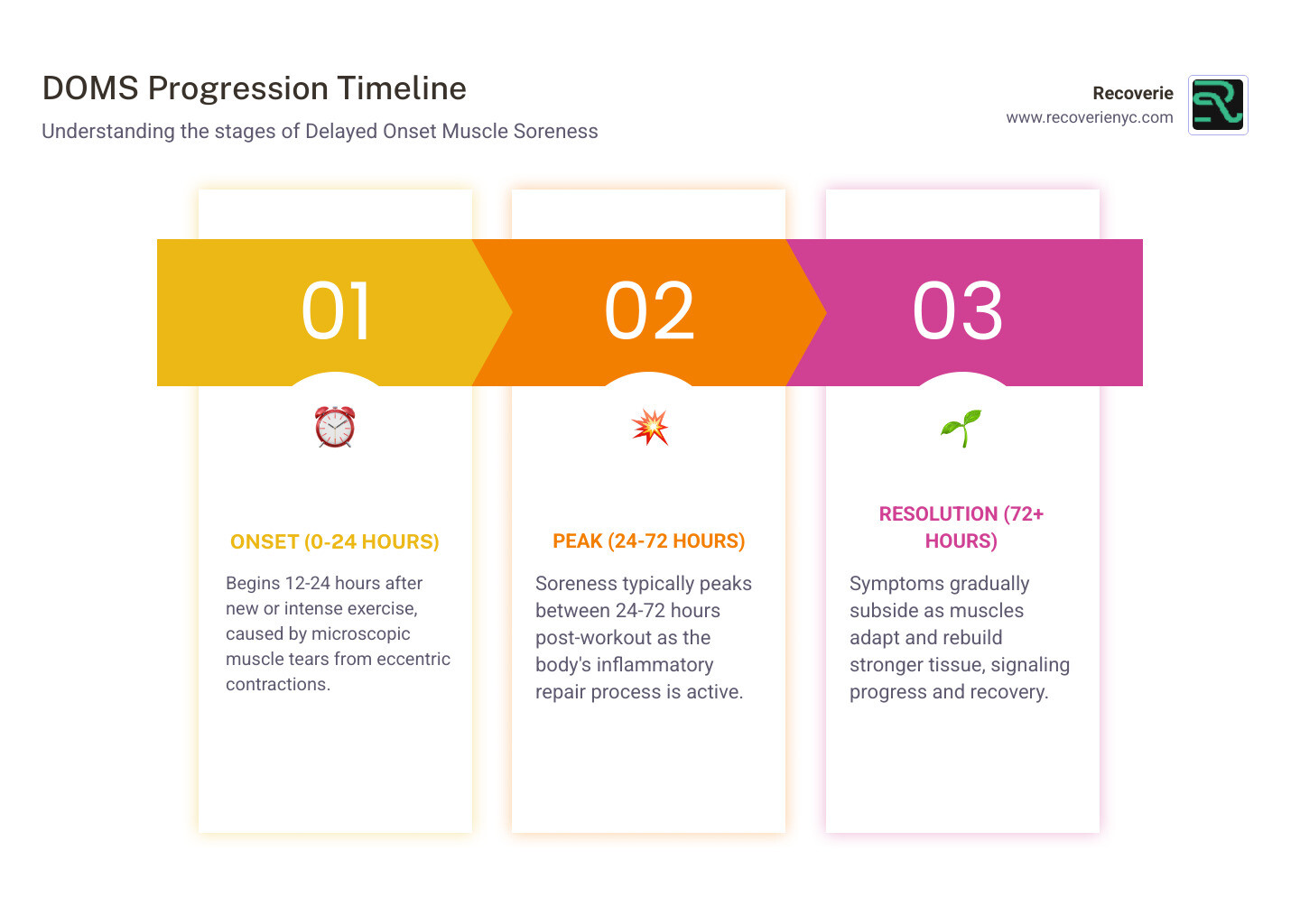
Understanding Muscle Soreness: What is DOMS?
That familiar ache you feel a day or two after a workout is called Delayed Onset Muscle Soreness , or DOMS. It typically appears 12 to 24 hours after exercise and peaks between one to three days .
DOMS is common for everyone, especially when trying new activities or increasing workout intensity. It's caused by eccentric muscle contractions —when muscles lengthen under tension, like when lowering a weight or running downhill. This action creates tiny, microscopic tears in your muscle fibers.
Contrary to the popular myth, lactic acid doesn't cause this soreness; it clears out quickly post-exercise. The ache is actually your body's natural inflammatory repair process at work, healing the micro-tears and building stronger muscle. The American College of Sports Medicine (ACSM) explains how this adaptation occurs after eccentric exercise. You can learn more from their research on ACSM on eccentric exercise and muscle damage.
While the exact science is complex, we know DOMS results from a combination of muscle damage and the subsequent inflammation that leads to tenderness and pain.
What Causes That Post-Workout Ache?
As mentioned, the ache comes from micro-tears and the resulting inflammation, not lactic acid. The main triggers for DOMS are activities your muscles aren't used to, especially:
- New or intense exercise: Pushing your muscles beyond their usual limits.
- Eccentric contractions: Movements where the muscle lengthens under load, such as the lowering phase of a squat or push-up, running downhill, or slowly lowering weights.
This controlled "damage" triggers a beneficial inflammatory response . Your body sends fluids and immune cells to clean up and rebuild the area, resulting in stronger muscle cells . It's a clear sign of adaptation.
Is Muscle Soreness a Good Sign?
So, is this ache a good thing? Often, yes. It's a sign your muscles are adapting and growing stronger . Think of it as confirmation that you've stimulated the rebuilding process. However, it's crucial to distinguish good soreness from bad pain that signals an injury. Normal DOMS feels like a dull ache, lasts 12 to 72 hours , and is a natural part of getting fitter.
Pay attention to these warning signs of a potential injury:
- Soreness lasting more than 5 days .
- Pain that is sharp or stabbing , or that significantly limits your range of motion .
- Noticeable swelling, bruising, or changes in your gait .
Normal muscle soreness relief comes within a few days. An injury often gets worse or hurts more with specific movements. Learning to listen to your body is key for sustainable training.
Immediate Muscle Soreness Relief Strategies
When aches settle in after a workout, several proven strategies can help you find muscle soreness relief quickly.
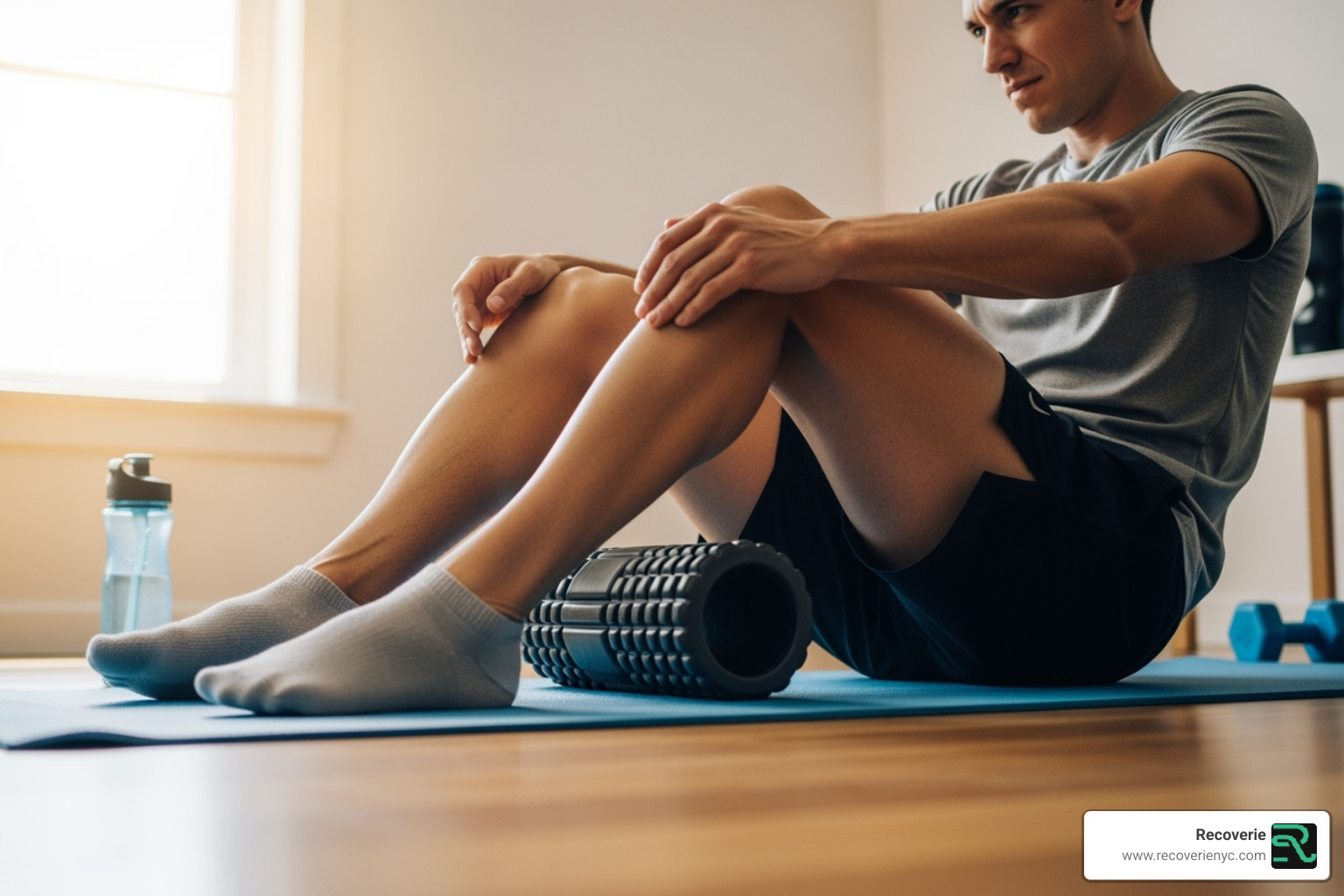
From active recovery to massage and myofascial release , you can take immediate steps to ease post-workout aches. Tools like foam rollers and massage guns are popular because they boost blood flow to deliver nutrients to sore areas, helping reduce tenderness. But sometimes, the best medicine is simply to keep moving.
Active Recovery: The "Keep Moving" Method
It might sound counterintuitive, but gentle movement is often the fastest way to feel better. This is called active recovery. It works by increasing blood flow to sore muscles, which helps flush out waste products and deliver oxygen and nutrients for repair, all without causing more damage.
Opt for light and gentle activities like a leisurely walk , an easy swim , or slow cycling. Research suggests active recovery can be more effective than complete rest, as some experts note in Active recovery as the answer for healing. The key is to listen to your body: the movement should feel good. If pain increases, it's time to rest.
The Great Debate: Heat vs. Cold Therapy
Walk into any gym locker room and you'll hear the eternal debate: ice or heat? The truth is, both have their place in muscle soreness relief , but timing is everything.
| Feature | Cold Therapy (Ice) | Heat Therapy (Warmth) |
|---|---|---|
| When to Use | Immediately after intense activity or acute injury; for throbbing pain and swelling. | A few hours after activity; for chronic stiffness, muscle relaxation, and older injuries. |
| Mechanism | Reduces blood flow (vasoconstriction), numbs pain, decreases inflammation and swelling. | Increases blood flow (vasodilation), relaxes muscles, promotes healing, eases stiffness. |
| Benefits | Acute pain relief, minimizes swelling, reduces immediate inflammation. | Soothes stiff joints, relaxes tense muscles, promotes nutrient delivery and waste removal. |
| Application | Ice packs (wrapped), cold baths, cryotherapy. | Heating pads, warm baths/showers, heat wraps. |
| Considerations | Apply indirectly; limited duration (15-20 min); some research suggests it might slow healing. | Avoid on acute injuries or swelling; do not use on broken skin; avoid extreme heat. |
Cold therapy is best immediately after intense exercise to address acute pain and swelling. Ice constricts blood vessels, which can numb pain and reduce inflammation. However, some research suggests that overusing ice might slow the natural healing process.
Heat therapy is ideal a few hours post-workout or for general stiffness. Warmth increases blood flow, relaxes tight muscles, and helps deliver healing nutrients.
The bottom line: use ice for acute pain and swelling, and heat for stiffness and general soreness. Neither should be painful.
A Word on Pain Relievers
Over-the-counter pain relievers like ibuprofen or naproxen can offer quick relief. These nonsteroidal anti-inflammatory drugs (NSAIDs) are effective but come with a trade-off. The very inflammation they suppress is also a key signal for muscle repair and growth. Some research suggests that high doses of NSAIDs might hinder progress from resistance training, creating a conflict between short-term relief and long-term recovery . You can read more in this Scientific perspective on NSAIDs and muscle rebuilding.
Acetaminophen may be a better choice as it targets pain with less impact on the inflammatory process. Always consult a healthcare professional, especially if you have other health conditions. The goal is to manage pain, not eliminate the productive discomfort that signals adaptation.
The Foundations: Nutrition, Hydration, and Sleep for Recovery
While foam rolling and ice baths get attention, the real magic of muscle soreness relief is built on three powerful foundations: what you eat, drink, and how well you sleep.
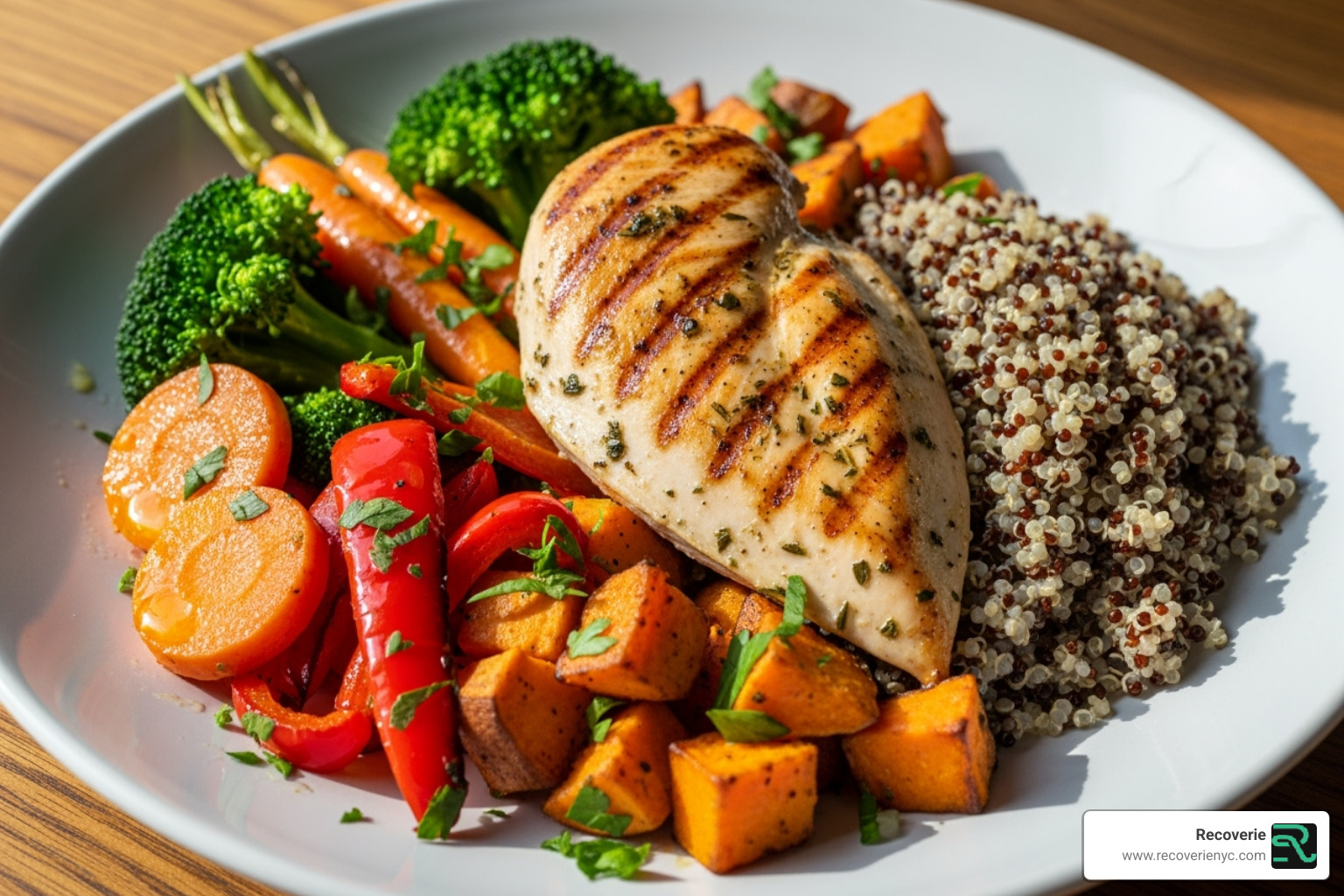
Think of these as your body's pit crew. Your muscles need proper nutrition, hydration, and rest to bounce back stronger. Focusing on these fundamentals doesn't just help with today's soreness—it sets you up for better workouts and long-term health.
Fueling Your Muscles: The Role of Nutrition and Hydration
Your post-workout meal provides the building blocks for muscle repair and growth.
Protein is essential. It provides the amino acids needed to repair the micro-tears from your workout. The American College of Sports Medicine suggests about 0.8 grams of protein per kilogram of body weight daily. Aim for 20 to 40 grams of protein within 30 minutes post-workout, along with carbs, to kickstart recovery.
Carbohydrates refuel your energy stores. A tough workout depletes your muscle glycogen. Carbs replenish these stores, so aim for 20 to 40 grams of carbs with your post-workout protein.
Anti-inflammatory foods are nature's pain relievers. Tart cherries , ginger , and turmeric are proven to reduce muscle soreness. Other great options include leafy greens, berries, nuts, olive oil, and fatty fish like salmon.
Water is critical. Dehydration slows recovery by hindering nutrient transport and waste removal. A simple rule: drink 13 to 20 ounces two hours before exercise, 5 to 10 ounces every 15-20 minutes during, and 8 ounces for every pound lost through sweat afterward. Your urine should be pale yellow. For more details, see the ACSM position paper on nutrition for athletes.
The Ultimate Recovery Tool: Quality Sleep
Sleep is your most powerful and free muscle soreness relief tool. It's when your body does its most critical repair work. During deep non-rapid eye movement (NREM) sleep, your body ramps up protein synthesis to mend muscle tears and releases human growth hormone (HGH) to oversee tissue regeneration.
Without enough quality sleep, your body lacks the time and hormonal support to fully recover. Aim for 7 to 9 hours of sleep for optimal recovery. As the Sleep Foundation's sleep recommendations explain, consistent, quality sleep is the foundation for all other recovery efforts, boosting energy and setting you up for better workouts.
Prevention and Home Remedies for Muscle Soreness Relief
The smartest approach to muscle soreness relief is preventing it from becoming overwhelming in the first place. Just as regular car maintenance prevents breakdowns, smart training habits protect your body.

When soreness does strike, your kitchen and bathroom likely hold several effective remedies that are backed by both tradition and research.
How to Prevent Muscle Soreness Before It Starts
Prevention is the best medicine for muscle soreness. Smart training habits can dramatically reduce discomfort and keep you consistent.
- Start with a proper warm-up. Spend 5-10 minutes on light cardio (walking, cycling) to increase blood flow, followed by dynamic stretching like leg swings and arm circles to prepare muscles for work.
- Progress gradually. Your muscles adapt best to slow, steady increases in intensity over time. This approach builds strength without the overwhelming soreness that can derail your routine.
- Use proper exercise form. Correct technique protects you from injury and ensures you're working the intended muscles, turning soreness into productive progress.
- Don't skip the cool-down. A 5-10 minute cool-down with light movement and static stretches (holding for 20-30 seconds) helps your body wind down and supports recovery.
Popular Home Remedies for Muscle Soreness Relief
When soreness strikes, these time-tested home remedies can offer genuine relief:
- Epsom Salt Baths: The warm water and magnesium sulfate combine to relax tense muscles and increase blood flow.
- Tart Cherry Juice: Backed by research, its anti-inflammatory compounds (anthocyanins) can reduce pain and preserve muscle strength.
- Essential Oils: When diluted, oils like peppermint (for cooling relief) and lavender (for relaxation) can be massaged into sore areas.
- Apple Cider Vinegar: Used in baths or compresses, its anti-inflammatory properties may help ease discomfort.
- Topical and Oral Aids: Other popular remedies include massaging with coconut oil , taking oral magnesium supplements (especially for cramps), and using hot pepper (capsaicin) rubs for a warming sensation that distracts from pain.
- Nutritional Support: Some find relief with mineral-rich blackstrap molasses or by ensuring adequate Vitamin D3 levels, as deficiency can contribute to muscle pain.
When to See a Doctor for Muscle Pain
While most muscle soreness is normal, certain signs warrant professional medical advice.
Seek immediate medical attention for muscle pain accompanied by trouble breathing, dizziness, extreme weakness, a high fever with a stiff neck, or chest pain.
Make an appointment with your doctor if:
- Pain lasts more than five days without improving.
- You experience sharp, stabbing pain that limits your range of motion.
- There is severe swelling, redness, or skin discoloration .
- Pain develops after starting a new medication, like statins.
Trust your instincts. If something feels wrong, it's always best to consult a healthcare professional. The Mayo Clinic guide on when to seek medical attention provides comprehensive guidance on recognizing warning signs that warrant medical care.
Conclusion
Effective muscle soreness relief is about understanding your body and having a smart recovery plan. As we've covered, that post-workout ache (DOMS) is usually a positive sign of your muscles adapting and getting stronger.
You now have a toolkit of strategies for when discomfort strikes, from gentle movement and temperature therapies to natural home remedies . However, the true foundation of recovery lies in consistent habits: quality sleep, proper nutrition, and staying hydrated . These are the non-negotiables for how your body repairs itself.
The most crucial skill is listening to your body —knowing the difference between productive soreness and pain that signals a problem. A proactive approach to recovery transforms potential setbacks into progress.
For those navigating demanding urban lives in Brooklyn and New York City, recovery needs to be efficient and effective. At Recoverie, we specialize in next-level solutions that fit your schedule. Our advanced therapies—cryotherapy, ice baths, and red-light therapy—complement these foundational practices, offering personalized care in a supportive community on Brooklyn Bridge Park.
Ready to lift your recovery? Explore our advanced recovery therapies to see how professional treatments can accelerate your muscle soreness relief and help you thrive.
